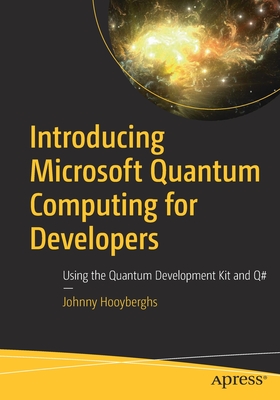Optimizing NFS Performance: Tuning and Troubleshooting NFS on HP-UX Systems
暫譯: 優化 NFS 性能:在 HP-UX 系統上調整與故障排除 NFS
Dave Olker, David Olker
- 出版商: Prentice Hall
- 出版日期: 2002-09-13
- 售價: $1,710
- 貴賓價: 9.5 折 $1,625
- 語言: 英文
- 頁數: 368
- 裝訂: Paperback
- ISBN: 0130428167
- ISBN-13: 9780130428165
已絕版
買這商品的人也買了...
-
 C++ 標準程式庫 (The C++ Standard Library: A Tutorial and Reference)
C++ 標準程式庫 (The C++ Standard Library: A Tutorial and Reference)$860$679 -
 ASP.NET 程式設計徹底研究
ASP.NET 程式設計徹底研究$590$466 -
 網頁設計超實作 - 活用Dreamweaver/Flash/Photoshop
網頁設計超實作 - 活用Dreamweaver/Flash/Photoshop$520$406 -
 專業 ASP.NET 安全防護 (Professional ASP.NET Security)
專業 ASP.NET 安全防護 (Professional ASP.NET Security)$550$435 -
 重構─改善既有程式的設計
重構─改善既有程式的設計$720$569 -
 Windows CE 嵌入式系統理論與實務
Windows CE 嵌入式系統理論與實務$680$537 -
 Linux 程式設計教學手冊
Linux 程式設計教學手冊$780$616 -
 最新詳解 Javascript & HTML & CSS 語法辭典(增訂新版)
最新詳解 Javascript & HTML & CSS 語法辭典(增訂新版)$490$382 -
 抓住你的 Photoshop CS2 中文版
抓住你的 Photoshop CS2 中文版$650$514 -
 深入淺出 Java 程式設計, 2/e (Head First Java, 2/e)
深入淺出 Java 程式設計, 2/e (Head First Java, 2/e)$880$695 -
 SIP 會談啟始協議操典
SIP 會談啟始協議操典$680$537 -
 BIOS Inside:BIOS 研發技術剖析, 2/e
BIOS Inside:BIOS 研發技術剖析, 2/e$620$490 -
 Linux Kernel 完全剖析
Linux Kernel 完全剖析$750$585 -
 Java 認證 SCJP 5.0 猛虎出閘
Java 認證 SCJP 5.0 猛虎出閘$650$514 -
 SQL 學習手札 (SQL: Visual QuickStart Guide, 2/e)
SQL 學習手札 (SQL: Visual QuickStart Guide, 2/e)$520$442 -
 CSS 功能索引式參考手冊
CSS 功能索引式參考手冊$390$308 -
 軟體預先架構之美學 (Prefactoring)
軟體預先架構之美學 (Prefactoring)$580$458 -
 SQL Server 2005 資料庫開發聖經
SQL Server 2005 資料庫開發聖經$890$757 -
 Windows System Programming, 3/e 中文版
Windows System Programming, 3/e 中文版$680$537 -
 柏青哥的 SUSE Linux
柏青哥的 SUSE Linux$580$493 -
 如何設計好網站 (Don't Make Me Think: A Common Sense Approach to Web Usability, 2/e)
如何設計好網站 (Don't Make Me Think: A Common Sense Approach to Web Usability, 2/e)$450$383 -
 專案管理之美學 (The Art of Project Management)
專案管理之美學 (The Art of Project Management)$620$490 -
 ASP.NET 2.0 深度剖析範例集
ASP.NET 2.0 深度剖析範例集$650$507 -
 Visual C# 2005 程式開發與介面設計秘訣
Visual C# 2005 程式開發與介面設計秘訣$750$593 -
 SQL Server 2005 行動裝置開發指南
SQL Server 2005 行動裝置開發指南$550$468
商品描述
Summary
Optimizing NFS Performance is the first authoritative, systematic guide to NFS performance optimization on HP-UX 11/11i systems. Learn to configure every component of the NFS product family for optimal performance, and discover dozens of previously undocumented tuning tips - including powerful new NFS client optimization techniques. Coverage includes environmental considerations, user-space daemons, kernel threads, Automount, AutoFS, NFS/UDP, NFS/TCP, NFS/PV2, NFS/PV3, CacheFS, mount options, buffer cache sizing, kernel parameters, troubleshooting, and more.
Table of Contents
List of Figures.
List of Tables.
List of Key Ideas and NFS Performance Examples.
List of NFS Differences Between HP-UX 11.0 and 11i.
Acknowledgements.
Introduction.
1. Network Considerations.Analyze Network Layout. Measure Network Throughput Capabilities. Network Troubleshooting Tools.
2. Local Filesystem Considerations.Analyze Filesystem Layout. Measure Filesystem Throughput Capabilities. Local Filesystem Recommendations.
3. biod Daemons.How Do the biods Work? Why Not Just Launch Hundreds of biods? When Might an NFS Client Not Benefit from biods? How Many biods Should Your NFS Client Run? Troubleshooting the biod Daemons.
4. nfsd Daemons and Threads.What Are the Various “nfsd” Daemons and Threads? NFS Server UDP Daemon Management. NFS Server TCP Thread Management. How Many nfsds Should Your NFS Server Run? Troubleshooting the nfsd Daemons and Threads.
5. rpc.mountd.What Services Does rpc.mountd Provide? What Factors Influence rpc.mountd Performance? Troubleshooting rpc.mountd.
6. rpc.lockd and rpc.statd.How Do rpc.lockd and rpc.statd Handle NFS Lock Requests? How Do rpc.lockd and rpc.statd Perform Lock Recovery? Examining NFS File Locks. Avoiding NFS File Lock Hangs in Your Environment. Why Would Restarting the Daemons Clear a Lock Hang? Ensuring Optimal NFS File Locking Performance. Troubleshooting rpc.lockd and rpc.statd.
7. Automount and AutoFS.Performance Differences between Automount and AutoFS. Automounter Performance Considerations. Should You Use Automount or AutoFS? Troubleshooting Automount and AutoFS.
8. CacheFS.CacheFS Overview. Using CacheFS. CacheFS Internals. HP CacheFS Enhancement—the rpages Mount Option. Measuring the Effectiveness of CacheFS.
9. NFS Protocol Version 2 vs. NFS Protocol Version 3.Differences between NFS PV2 and NFS PV3. Will a PV3 Installation Always Outperform PV2? Should You Use NFS PV2 or PV3 in Your Environment?
10. NFS/UDP vs. NFS/TCP.Overview of UDP and TCP. Connection Management. Managing Retransmissions and Timeouts. Network Interconnect Device Buffering Considerations. Should You Use NFS/UDP or NFS/TCP in Your Environment?
11. Buffer Cache.What Is the Buffer Cache? Why Not Allocate Lots of Memory for Buffer Cache? How Do Dynamic and Static Buffer Cache Mechanisms Differ? Should You Configure a Dynamic or Static Buffer Cache? Interaction with the syncer(1M) Daemon. Automounter's Influence on Client Caching. How Much Buffer Cache Memory Should You Configure? Measuring Buffer Cache Effectiveness.
12. Kernel Parameters.Tunable Kernel Parameter List. Inspecting Kernel Parameter Settings. Monitoring Kernel Parameter Values via GlancePlus.
Appendix A. Summary of Tuning Recommendations.NFS Client and Server Daemons. Supported NFS Kernel Parameters. Undocumented NFS Kernel Parameters. NFS Mount and Exportfs Options.
Appendix B. Patching Considerations.Performance-Enhancing Defect Fixes. Performance-Enhancing New Functionality. Patching Dependent Subsystems. Verifying Current NFS Patch Level.
Bibliography.
Index.
商品描述(中文翻譯)
摘要
優化 NFS 性能是第一本權威且系統化的指南,專注於 HP-UX 11/11i 系統上的 NFS 性能優化。學習如何為 NFS 產品系列的每個組件進行最佳配置,並發現數十個先前未記錄的調整技巧,包括強大的新 NFS 客戶端優化技術。內容涵蓋環境考量、用戶空間守護進程、內核線程、Automount、AutoFS、NFS/UDP、NFS/TCP、NFS/PV2、NFS/PV3、CacheFS、掛載選項、緩衝區快取大小、內核參數、故障排除等。
目錄
圖表清單。
表格清單。
關鍵概念與 NFS 性能範例清單。
HP-UX 11.0 與 11i 之間的 NFS 差異清單。
致謝。
導言。
1. 網路考量。
分析網路佈局。測量網路吞吐能力。網路故障排除工具。
2. 本地檔案系統考量。
分析檔案系統佈局。測量檔案系統吞吐能力。本地檔案系統建議。
3. biod 守護進程。
biods 如何運作?為什麼不直接啟動數百個 biods?何時 NFS 客戶端可能無法從 biods 中受益?您的 NFS 客戶端應該運行多少個 biods?故障排除 biod 守護進程。
4. nfsd 守護進程和線程。
各種 “nfsd” 守護進程和線程是什麼?NFS 伺服器 UDP 守護進程管理。NFS 伺服器 TCP 線程管理。您的 NFS 伺服器應該運行多少個 nfsds?故障排除 nfsd 守護進程和線程。
5. rpc.mountd。
rpc.mountd 提供哪些服務?哪些因素影響 rpc.mountd 性能?故障排除 rpc.mountd。
6. rpc.lockd 和 rpc.statd。
rpc.lockd 和 rpc.statd 如何處理 NFS 鎖請求?rpc.lockd 和 rpc.statd 如何執行鎖恢復?檢查 NFS 檔案鎖。避免在您的環境中出現 NFS 檔案鎖掛起。為什麼重新啟動守護進程可以清除鎖掛起?確保最佳的 NFS 檔案鎖性能。故障排除 rpc.lockd 和 rpc.statd。
7. Automount 和 AutoFS。
Automount 和 AutoFS 之間的性能差異。Automounter 性能考量。您應該使用 Automount 還是 AutoFS?故障排除 Automount 和 AutoFS。
8. CacheFS。
CacheFS 概述。使用 CacheFS。CacheFS 內部結構。HP CacheFS 增強—rpages 掛載選項。測量 CacheFS 的有效性。
9. NFS 協議版本 2 與 NFS 協議版本 3。
NFS PV2 和 NFS PV3 之間的差異。PV3 安裝是否總是優於 PV2?您應該在您的環境中使用 NFS PV2 還是 PV3?
10. NFS/UDP 與 NFS/TCP。
UDP 和 TCP 概述。連接管理。管理重傳和超時。網路互連設備緩衝考量。您應該在您的環境中使用 NFS/UDP 還是 NFS/TCP?
11. 緩衝區快取。
什麼是緩衝區快取?為什麼不為緩衝區快取分配大量記憶體?動態和靜態緩衝區快取機制有何不同?您應該配置動態還是靜態緩衝區快取?與 syncer(1M) 守護進程的互動。Automounter 對客戶端快取的影響。您應該配置多少緩衝區快取記憶體?測量緩衝區快取的有效性。
12. 內核參數。
可調整的內核參數清單。檢查內核參數設置。通過 GlancePlus 監控內核參數值。
附錄 A. 調整建議摘要。
NFS 客戶端和伺服器守護進程。支持的 NFS 內核參數。未記錄的 NFS 內核參數。NFS 掛載和 exportfs 選項。
附錄 B. 補丁考量。
性能增強缺陷修復。性能增強新功能。補丁依賴的子系統。驗證當前 NFS 補丁級別。
參考文獻。
索引。























